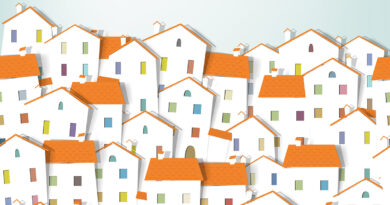New Report Details Lending Trends
Cotality, a global property information, analytics, and data-enabled solutions provider, released its latest findings on the housing and mortgage markets. While the spring homebuying season is in full swing, homebuying activity continues to be challenged by elevated and volatile mortgage rates as well as affordability challenges resulting from surging costs of insurance and property taxes. These market dynamics are putting pressure on existing homeowners as well as future buyers. At the same time, pockets of homebuyers are benefiting from increased for-sale inventories and a slower rate of home price appreciation, particularly among condominium homes.
Housing market trends
1. People are making more offers than they did in 2023 and 2024, with monthly pending sales for March up 12% year over year. However, it was a chilly start to the spring homebuying season for closed sales. Closed home sales in March, which reflect offers made in January and February, remained 12% below 2024 levels. Major metros in the South are particularly feeling the pinch. Miami, Austin, Tex., and Atlanta remain 20-30% below 2024 sales activity. In contrast, some markets are seeing a rebound in home sales, particularly markets in California, which saw a 10%+ increase in home sales compared to 2024.
2. Home sales in the West are up 60-70% year over year thanks to a surge in for-sale inventory. But not every region is seeing the same dynamics. Inventories in Northeast remain 60-80% below 2019 levels. This is both holding back home sales activity while continuing to put pressure on home prices.
3. Home prices rose 2.9% year over year in February, continuing the trend of slower home price growth. However, home prices are expected to pick up and increase by 4.2% by February 2026. The hottest markets going into spring homebuying season include Newark, N.J., Nashville, Tenn., Boston, Detroit, Mich., Anaheim, Calif., Providence, R.I., and Indianapolis.
4. Home price growth for single-family attached homes (condominiums and townhomes) is slower than for single-family-detached homes. Attached homes were up 1% year over year in February (while detached homes were up 3.3%), as inventory of condominiums builds up. This is particularly apparent in markets with weakening demand, such as Florida where homeowner costs are rising due to insurance increases and special assessments on older condominium buildings.
5. The share of home purchases made by investors hit a new high of 31% in the first quarter of 2025, up 5 percentage points from Q1 2024. The rise is largely driven by medium-sized investors who own between 10 and 100 properties. They increased their market share by 6% to 10% of purchases over the same period.
6. Single-family rent prices increased 2.9% year over year in February 2025. Los Angeles, had the highest year-over-year rent price increases at 7.2%. This increase follows the devastating wildfires in Pacific Palisades and Eaton that destroyed nearly 20,000 properties and displaced thousands of residents. The increase in Los Angeles rents was most pronounced in high-end rentals. Compared to the previous year, when high-end rentals increased an average of 2.6%, February saw the price of these top-tier rentals increase 9.1%.
Mortgage market trends
7. The share of seriously delinquent mortgages (90 days-past-due or more) reached the highest rate since February 2022. Serious delinquencies increased to 1.01% in February 2025. The largest increase in serious delinquency rate was among FHA loans, which were up 100 basis points year over year, followed by VA loans, up 54 basis points year over year. In contrast, the serious delinquency rate for conventional loans saw a minor increase of 1 basis point year over year.
8. Increasing home insurance costs and property taxes are challenging home affordability and increasing escrow account contribution amounts across the country (escrow accounts generally cover costs of property taxes and insurance). While the average escrow amount has increased 17% from 2023 to 2024, the top five states with highest increases include: Colorado (31%), Louisiana (28%), Wyoming (26%), Montana (24%), and Alabama (24%).
9. Last fall’s hurricanes Helene and Milton drove up serious mortgage delinquencies in hardest hit states. Florida jumped from 3.4% to 4% this February, South Carolina rose from 3.1% to 3.4%, Georgia increased from 3.5% to 3.9%, Louisiana was up from 5.6% to 5.9%, North Carolina rose from 2.6% to 2.9%). Also, the states experiencing the highest increases in escrow payments often showed rising delinquency rates.
10. Eighty six percent of outstanding mortgages have rates below 6%. However, with recent mortgage originations coming in at higher rates, the pool of mortgages with the potential to refinance has grown: 4.1 million recent loans have a mortgage rate at or above 6%, and 2.8 million loans are at 6.5% mortgage rate or higher.

The Place for Lending Visionaries and Thought Leaders. We take you beyond the latest news and trends to help you grow your lending business.



